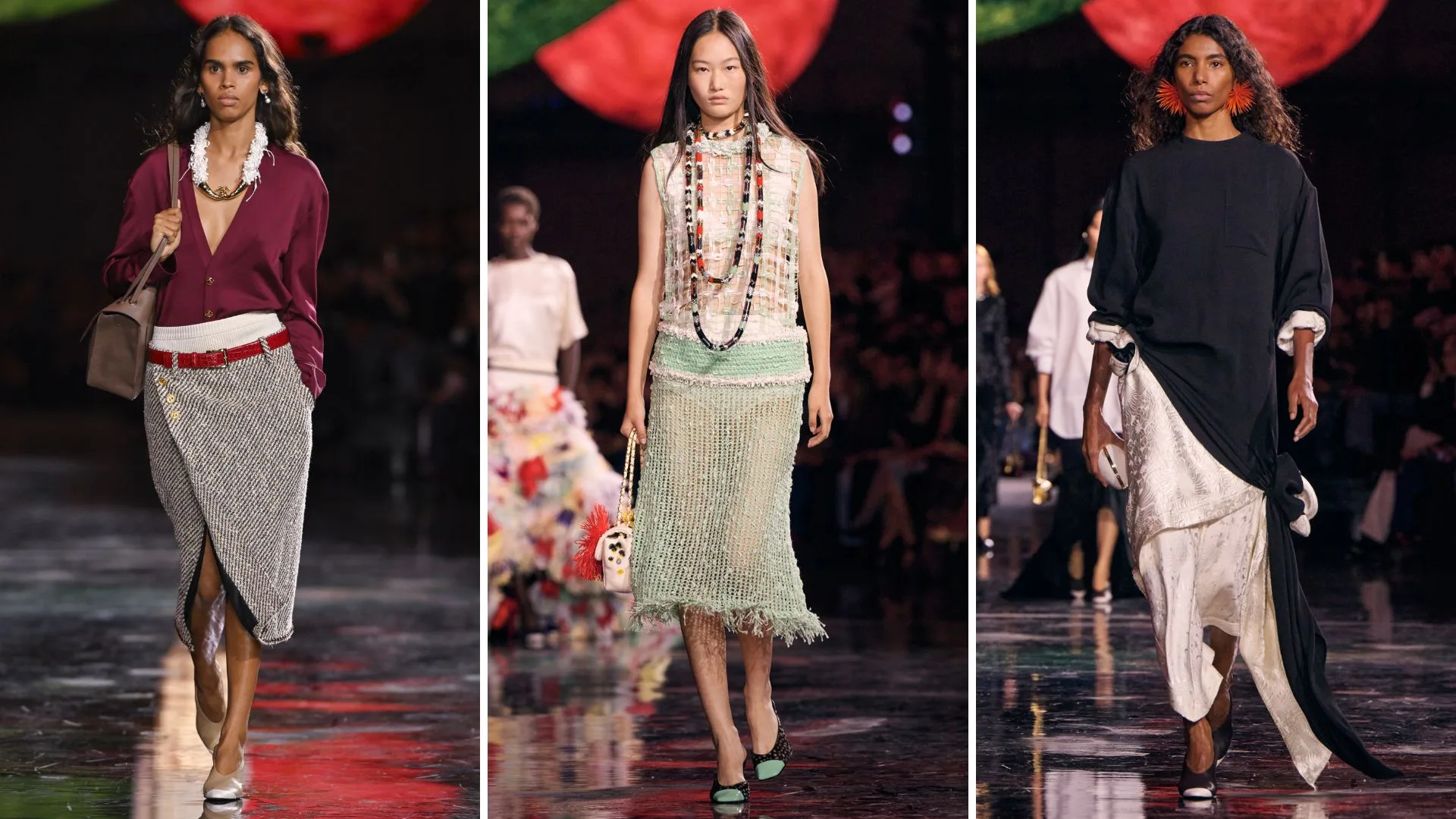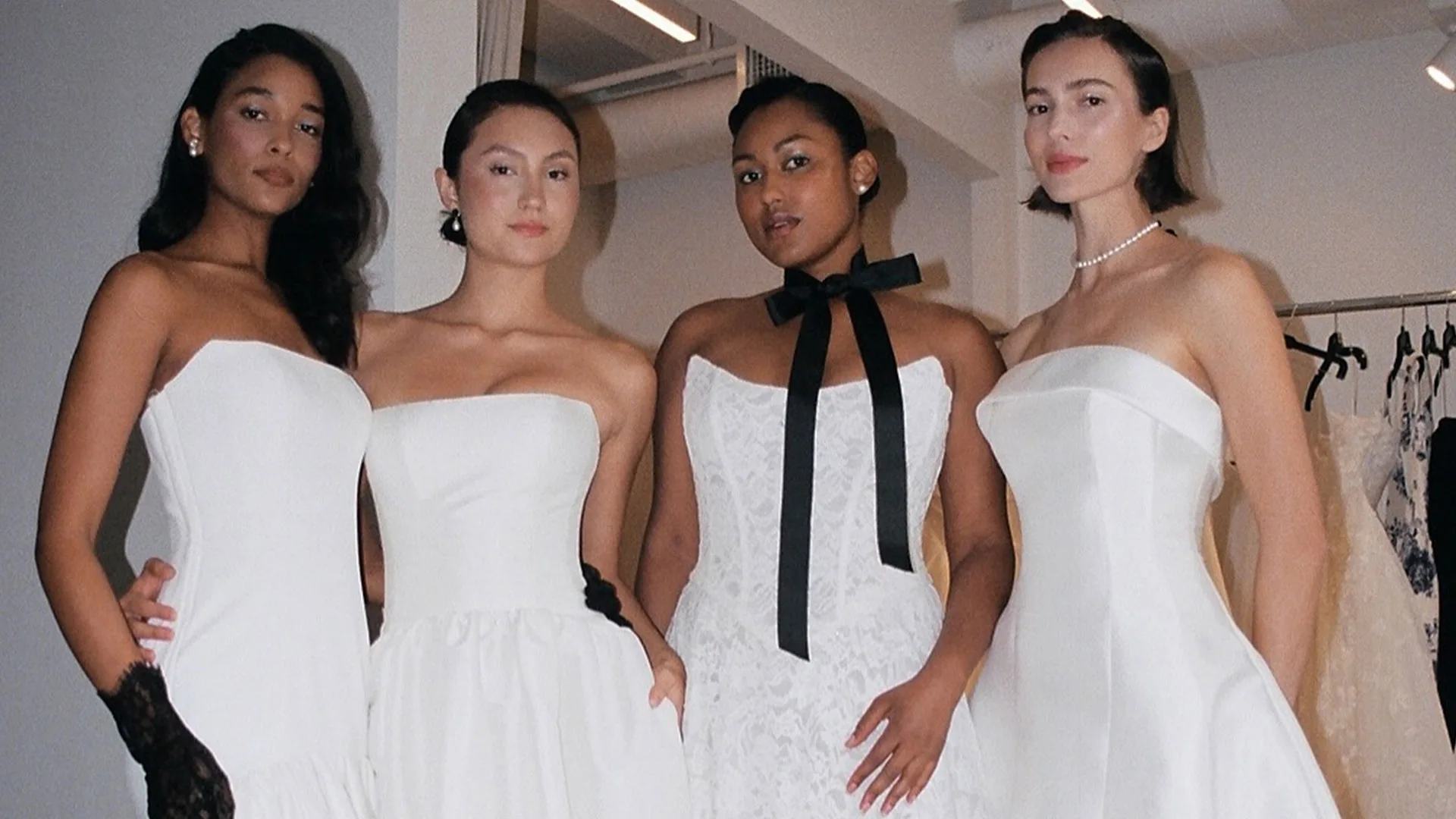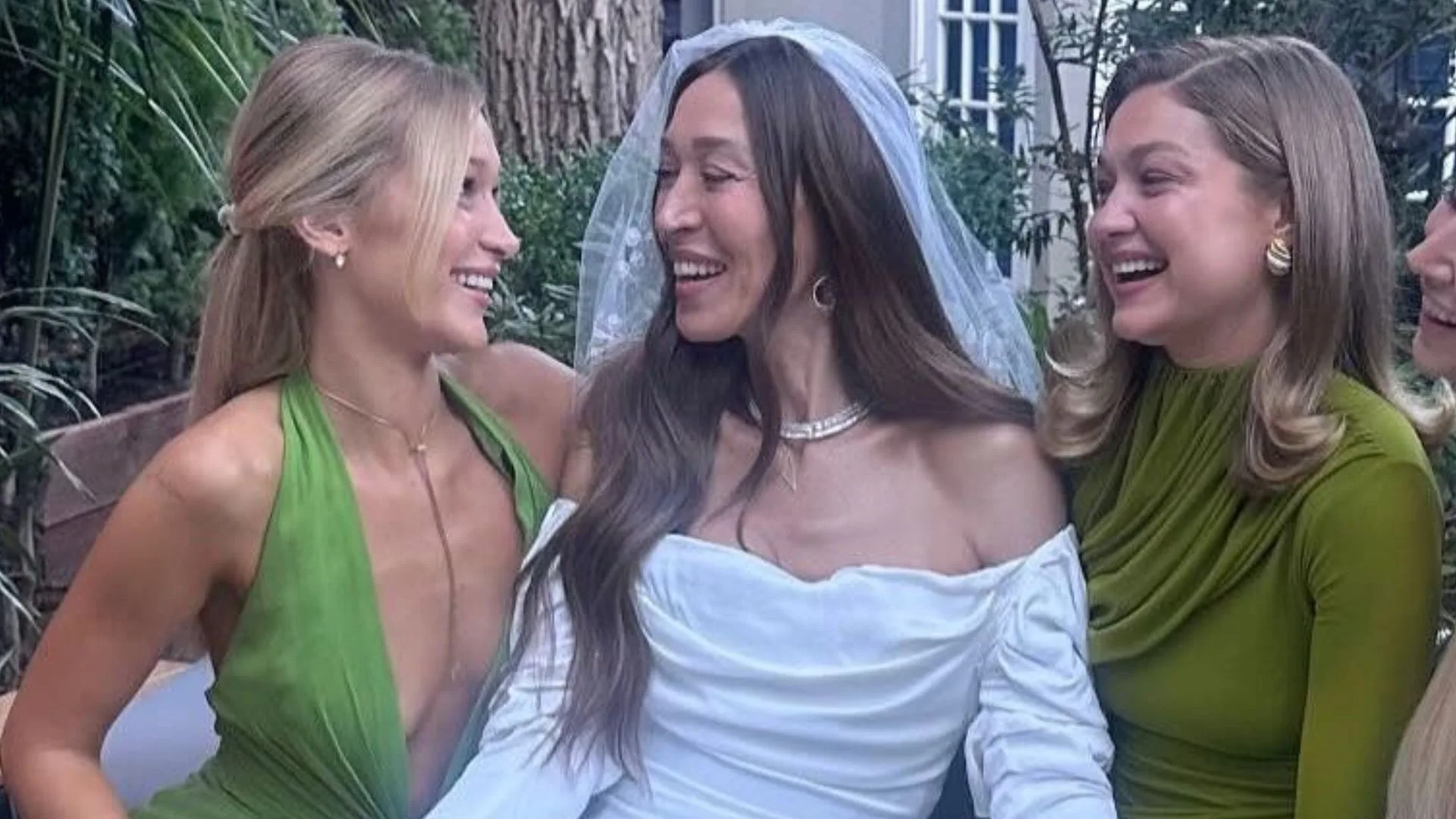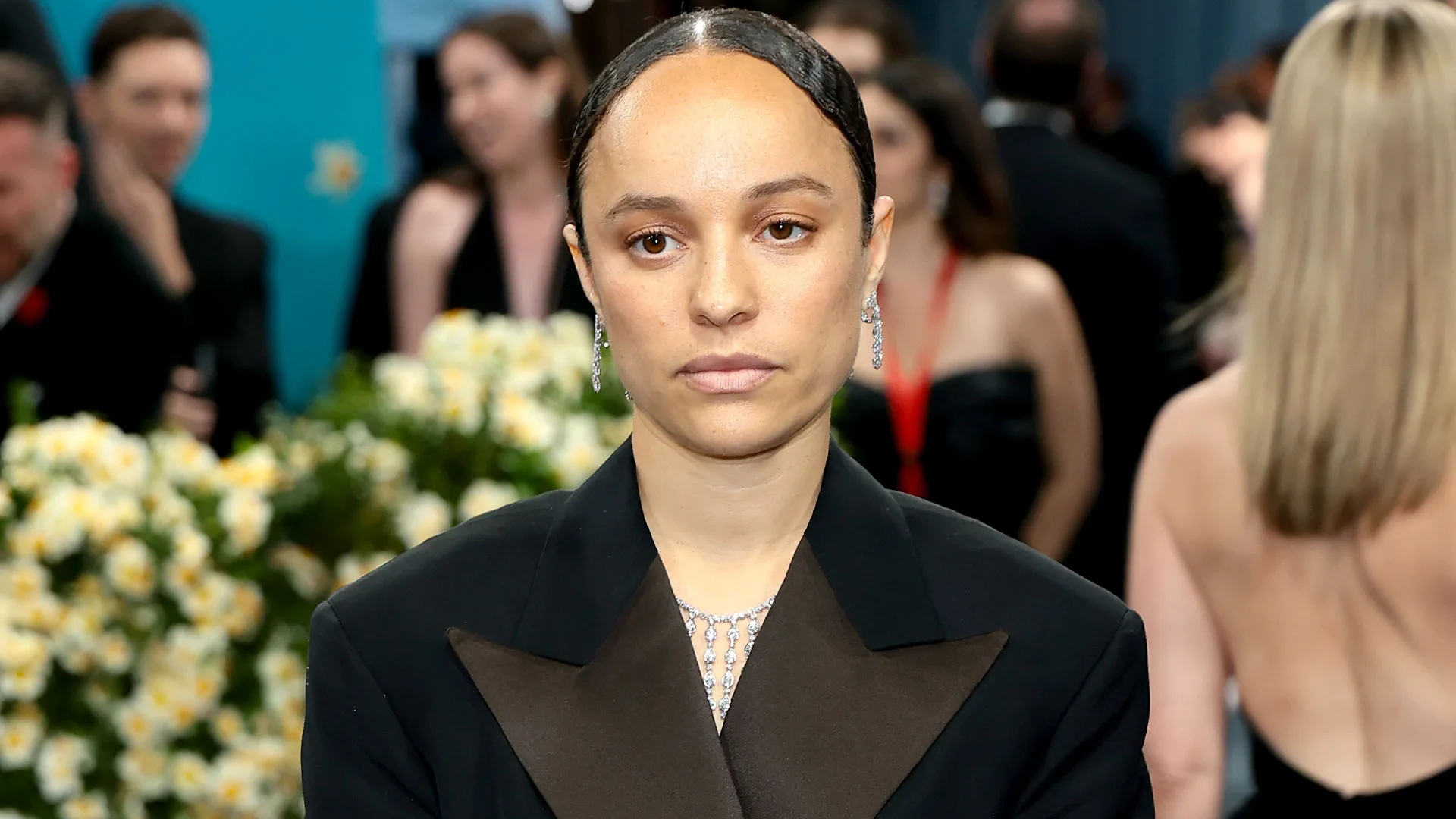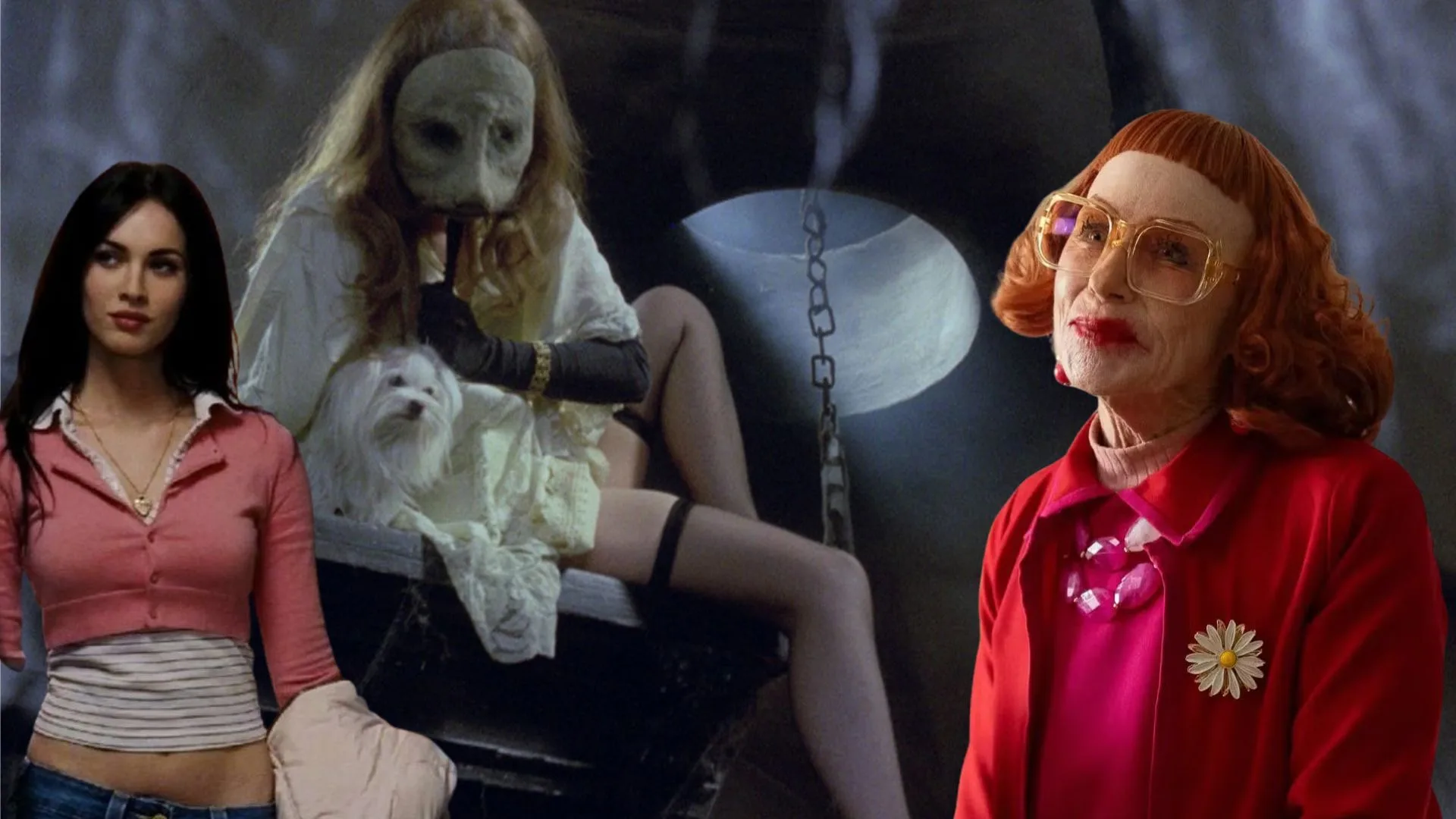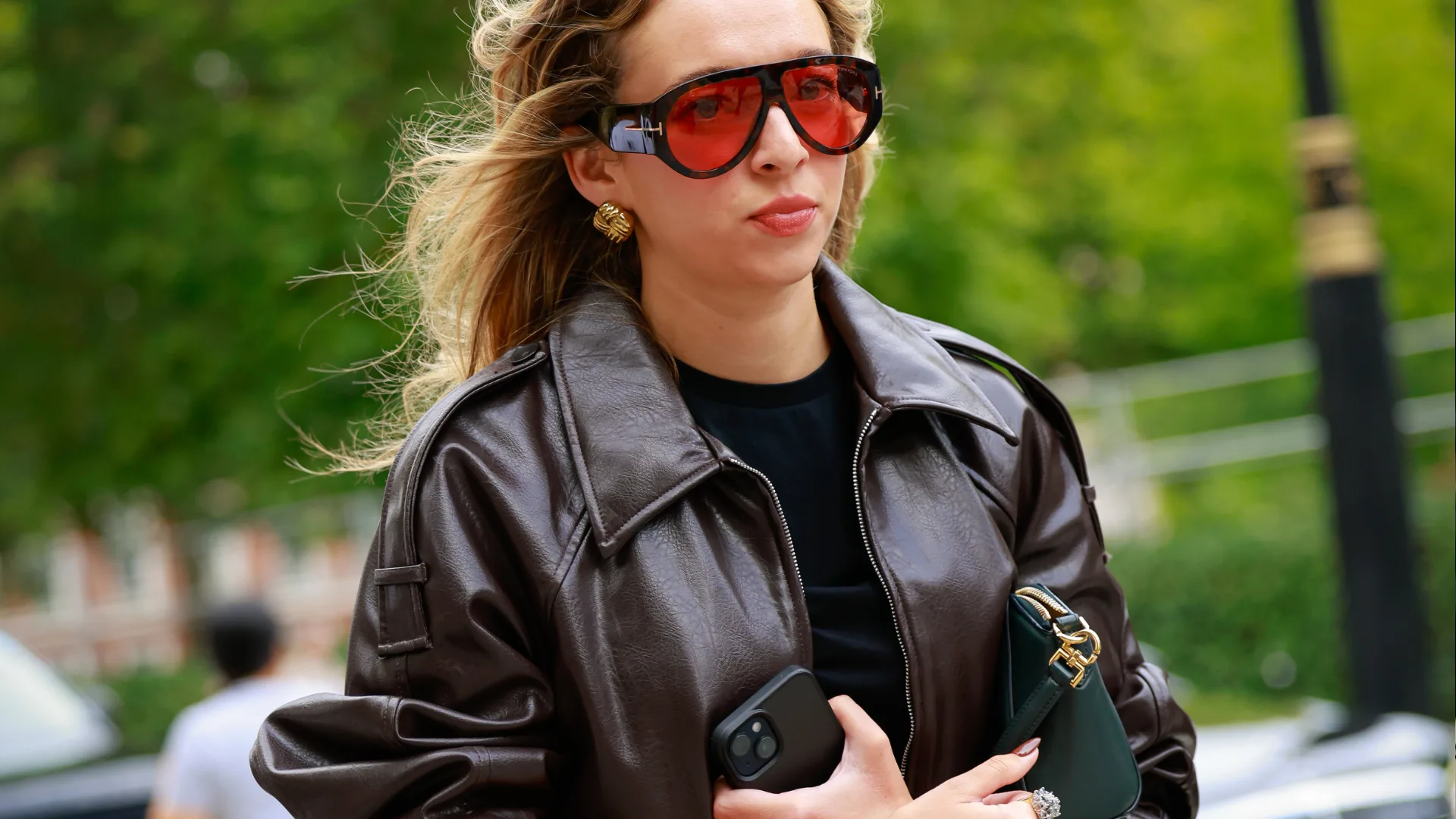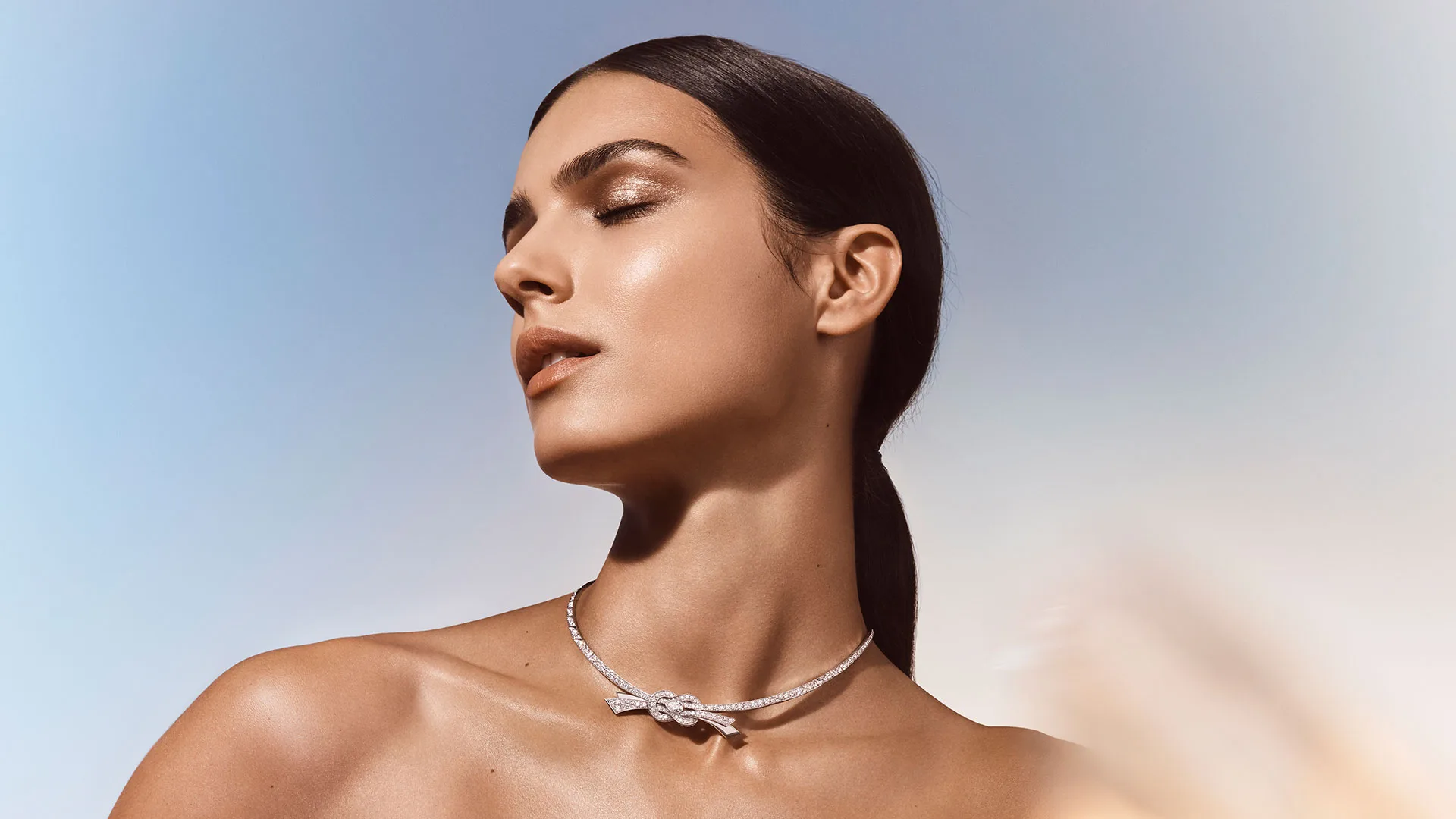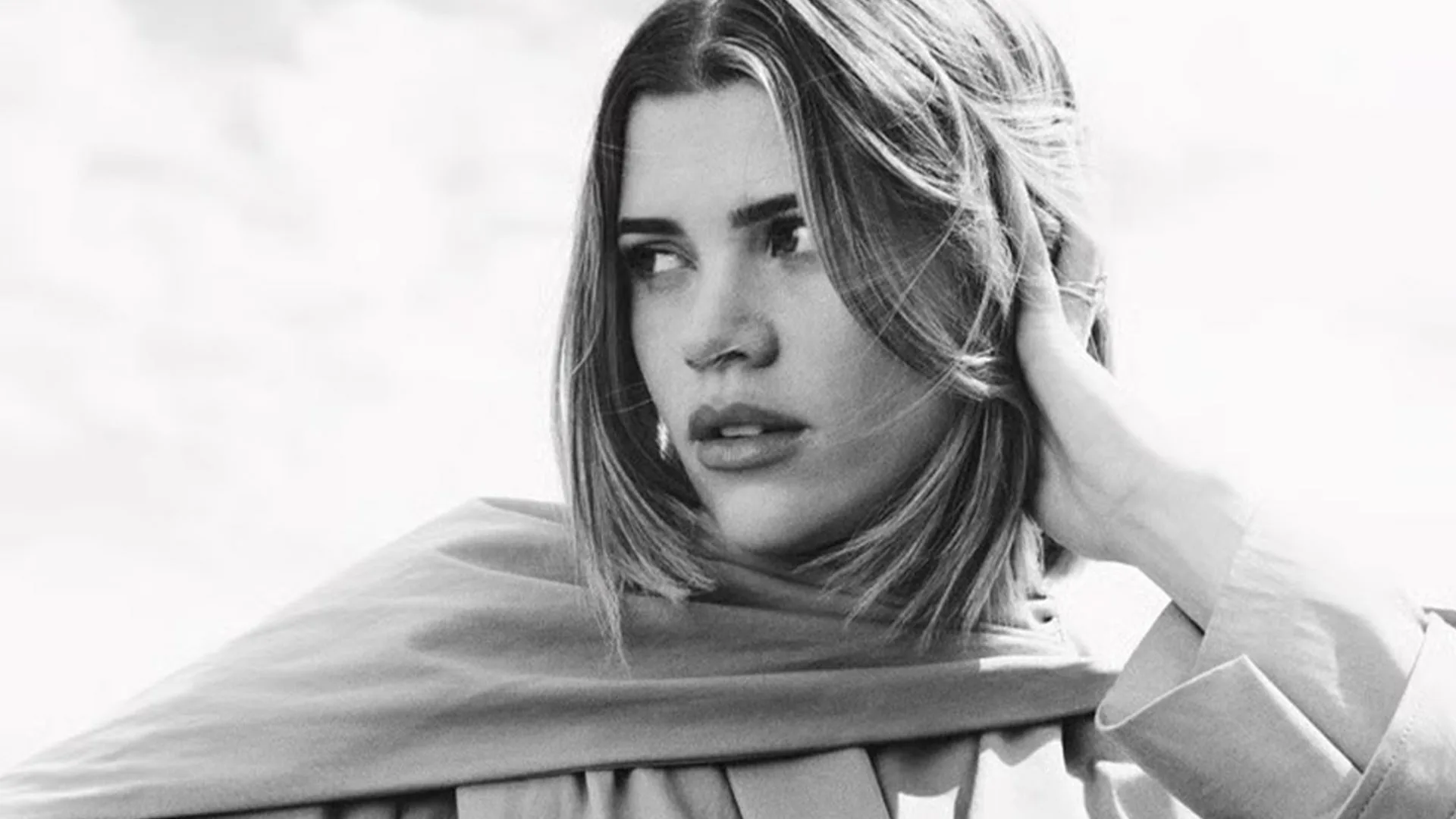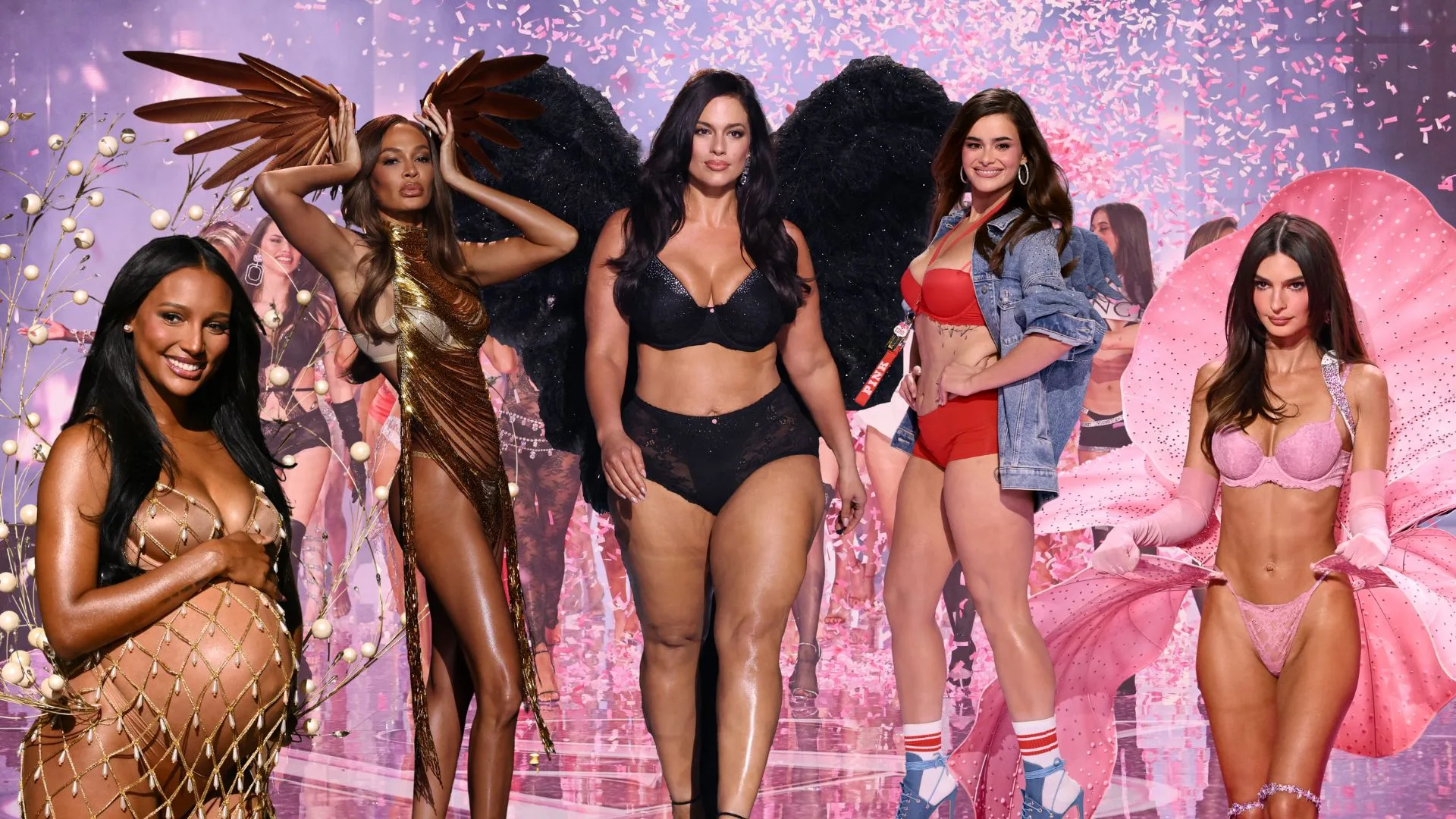In Paris, the night can often feel suspended, as if the city itself is holding its breath. Streetlamps glow against the cobblestones, and the Seine catches the moonlight in glints that feel almost too deliberate to be accidental. It’s a space where rules bend, scales shift, and even the quietest gesture can feel significant.
Chanel brought that very tension to life on Tuesday evening at Paris Fashion Week. Matthieu Blazy’s debut ready-to-wear collection for the French house unfolded beneath glowing planets suspended above the runway, with models weaving between Mars and Jupiter as if navigating a cosmos of couture. “For this first Chanel show, I wanted to do something quite universal, like a dream, something outside of time, and I was fascinated by the stars, a theme so dear to the House,” Blazy wrote on Instagram, framing the set as a metaphor for the universality of the Chanel woman and the freedom inherent in her style. He later reflected, “Chanel is about love. The birth of modernity in fashion comes from a love story. It has no time or space; this is an idea of freedom. The freedom worn and won by Gabrielle Chanel.”

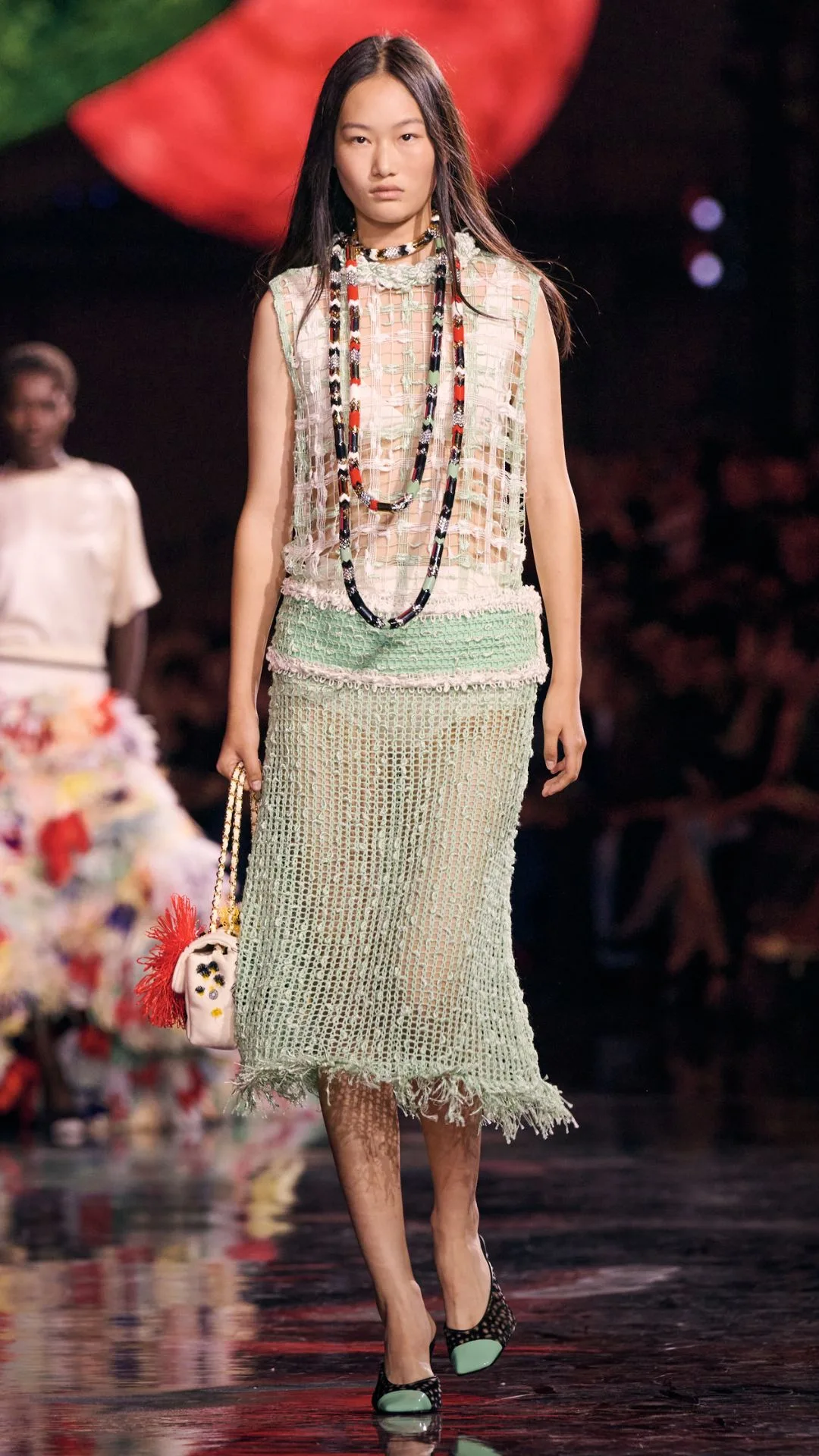
The show opened with a grey tweed blazer and cropped jacket in Blazy’s signature slouchy, cool-girl style—an immediate nod to Chanel codes, uncompromised by Blazy’s modern touch. From there, the collection moved fluidly between masculine and feminine, structured and supple, turning paradox into a visual language you could wear. Pantsuits inspired by garments Gabrielle Chanel borrowed from Boy Capel arrived with mannish shoulders and officer-style jackets, paired with low-slung skirts and asymmetrical knits, while even the little black dress was reworked with side knots or golden threads—subtle risks that made the familiar feel new.
Blazy divided the collection conceptually into three arcs: Un Paradoxe revisited masculine-inspired silhouettes from Gabrielle Chanel’s borrowed wardrobe, Le Jour focused on softened daywear with knits and integrated camellias, and L’Universel expanded the scope with vibrant patterns, hand-painted linings, and statement jewellery.
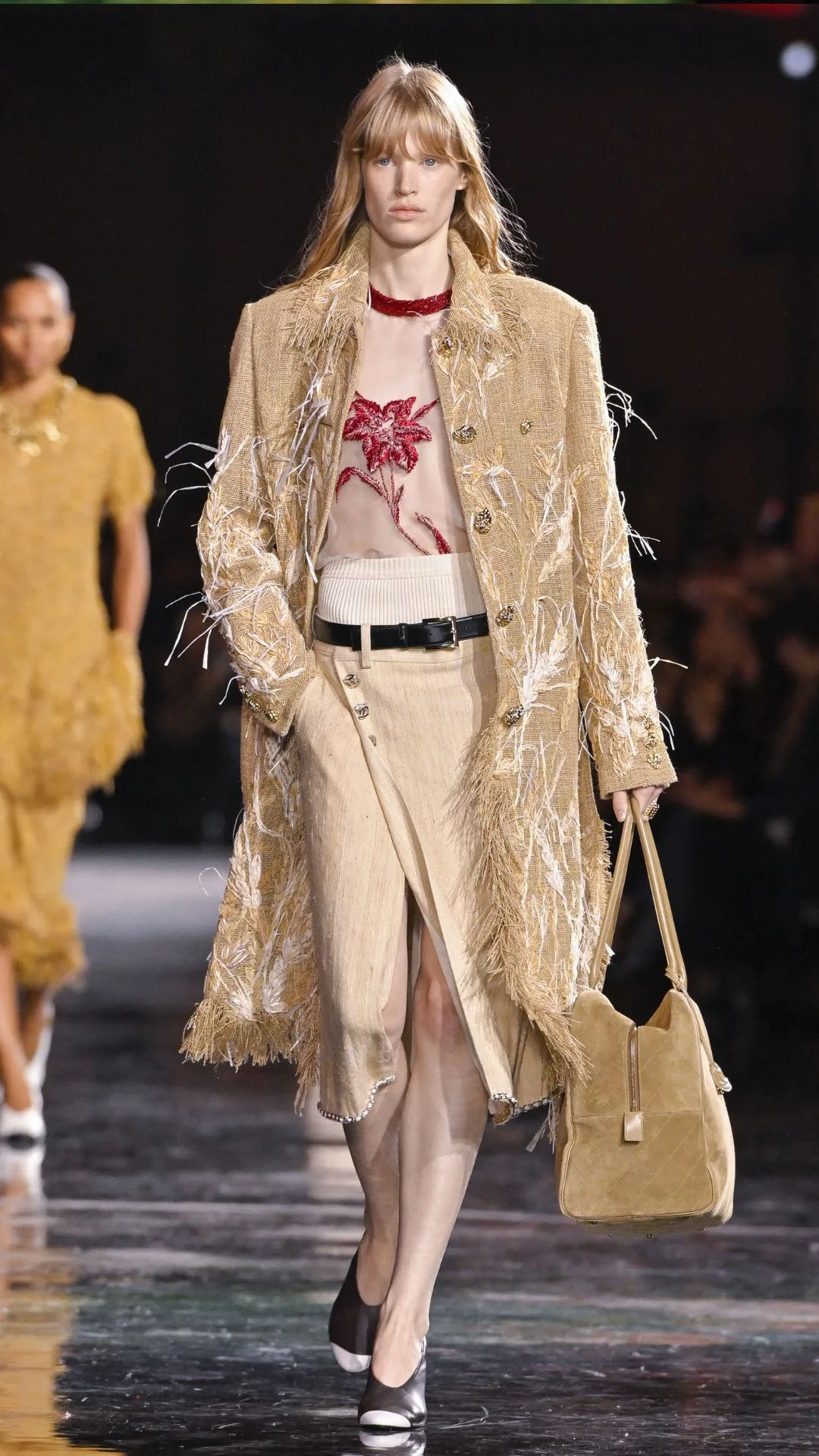
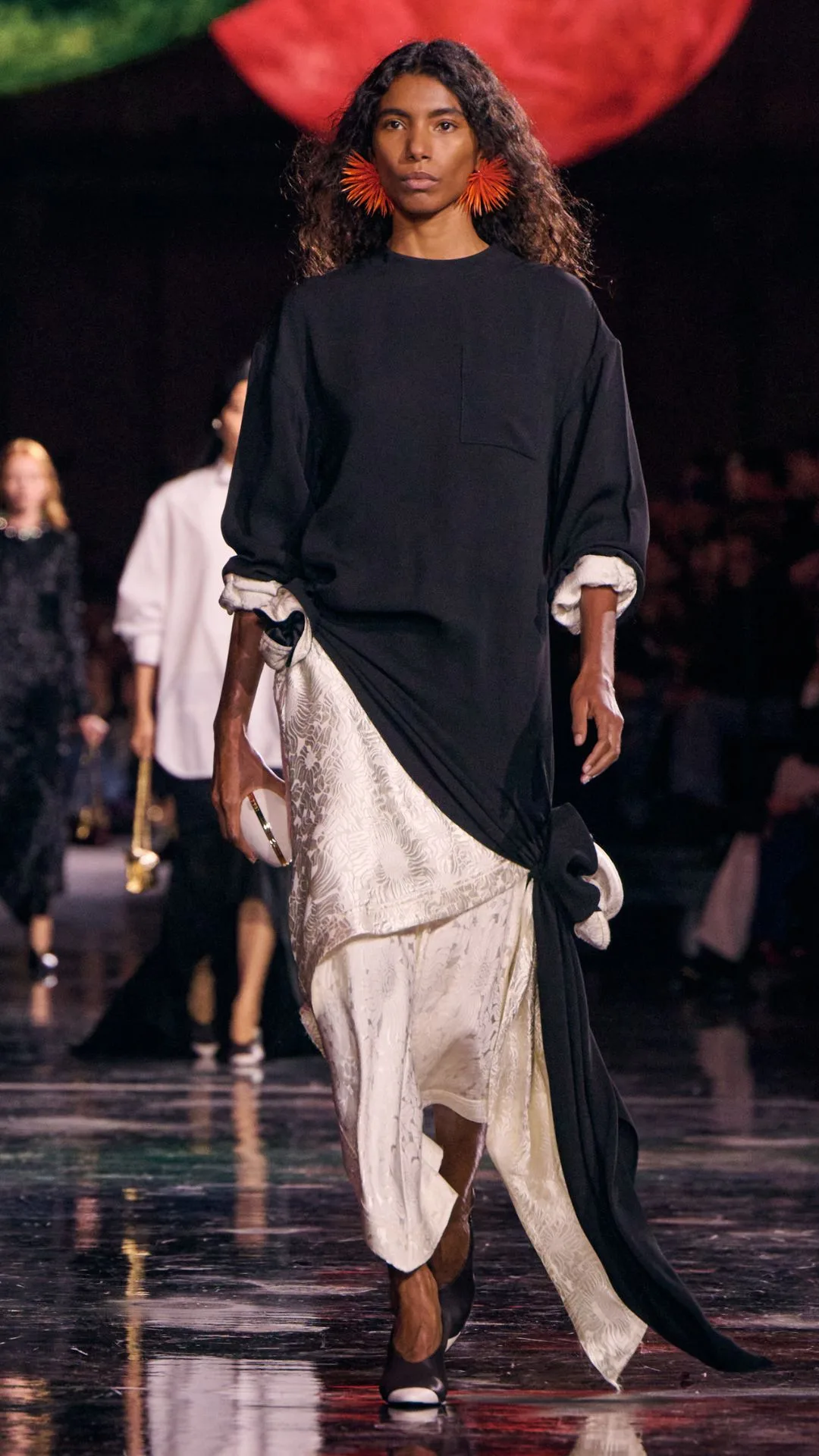
Tweed, the house’s signature, was continually reinvented. Chains traditionally hidden to weight hems were placed on the outside, trompe-l’œil beaded suits felt intentionally unravelled, and frayed fabrics were paired with silk and organza. Midi skirts split daringly at the thigh, while high-low maxis trailed the runway with a dramatic sweep. The camellia bloomed at unexpected scales, exploding into giant floral appliqués across skirts and jackets, and even appearing as baroque-style brooches.
Blazy’s nod to heritage was meticulous. Charvet shirts, historically worn by Coco Chanel herself, were reimagined with modern cuts and layered under oversized jackets with turned-up cuffs. 2.55 bags appeared crashed and crushed, their burgundy linings exposed. Tweed jackets gained volume, and silk dresses were gathered asymmetrically, referencing the precision and romance of Chanel’s past while embracing a liberated, wearable future. Accessories added drama to every look—the signature beige and black round-toe heels, oversized fringed hats, and statement necklaces and earrings added bursts of movement and shine.
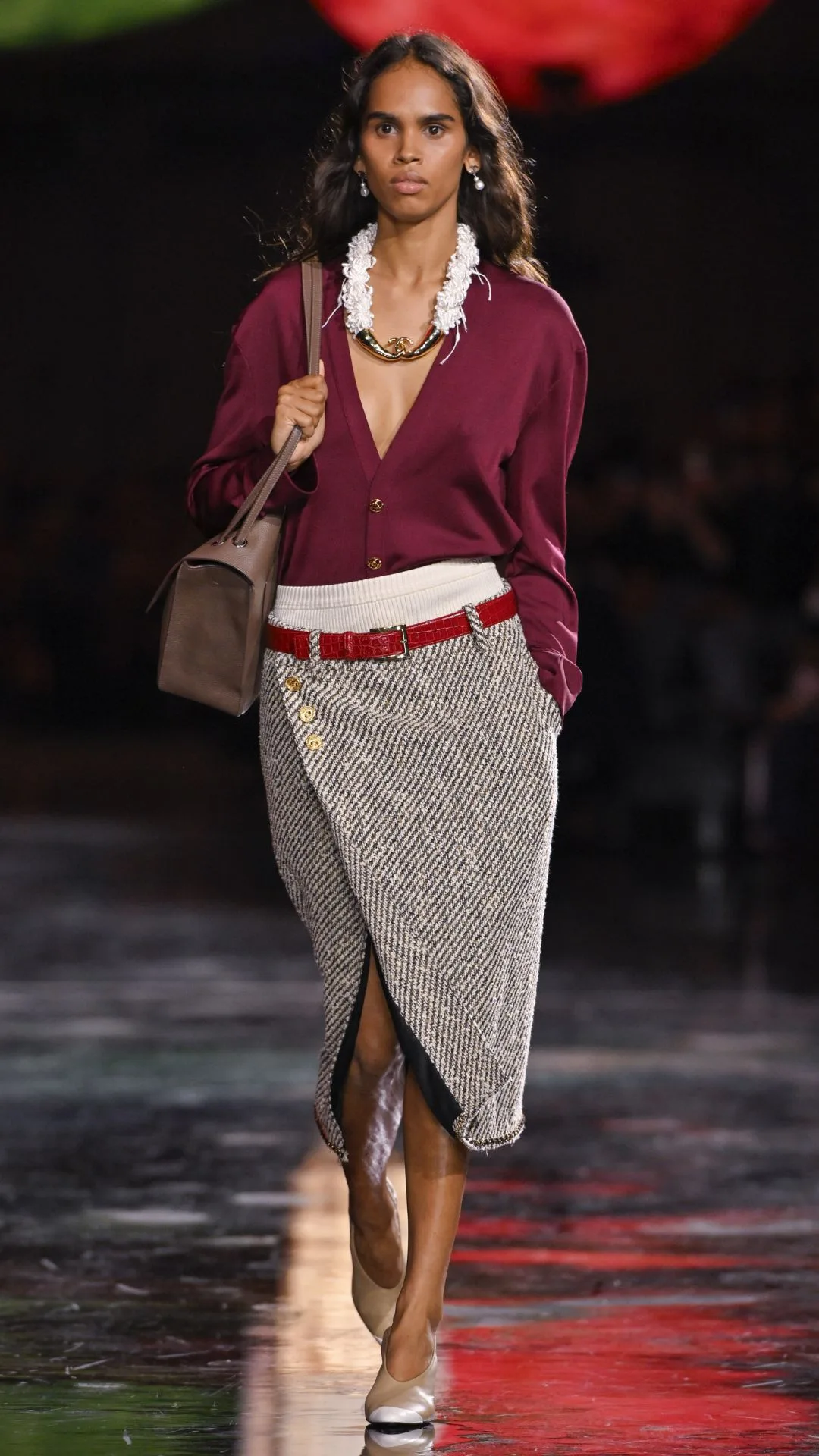
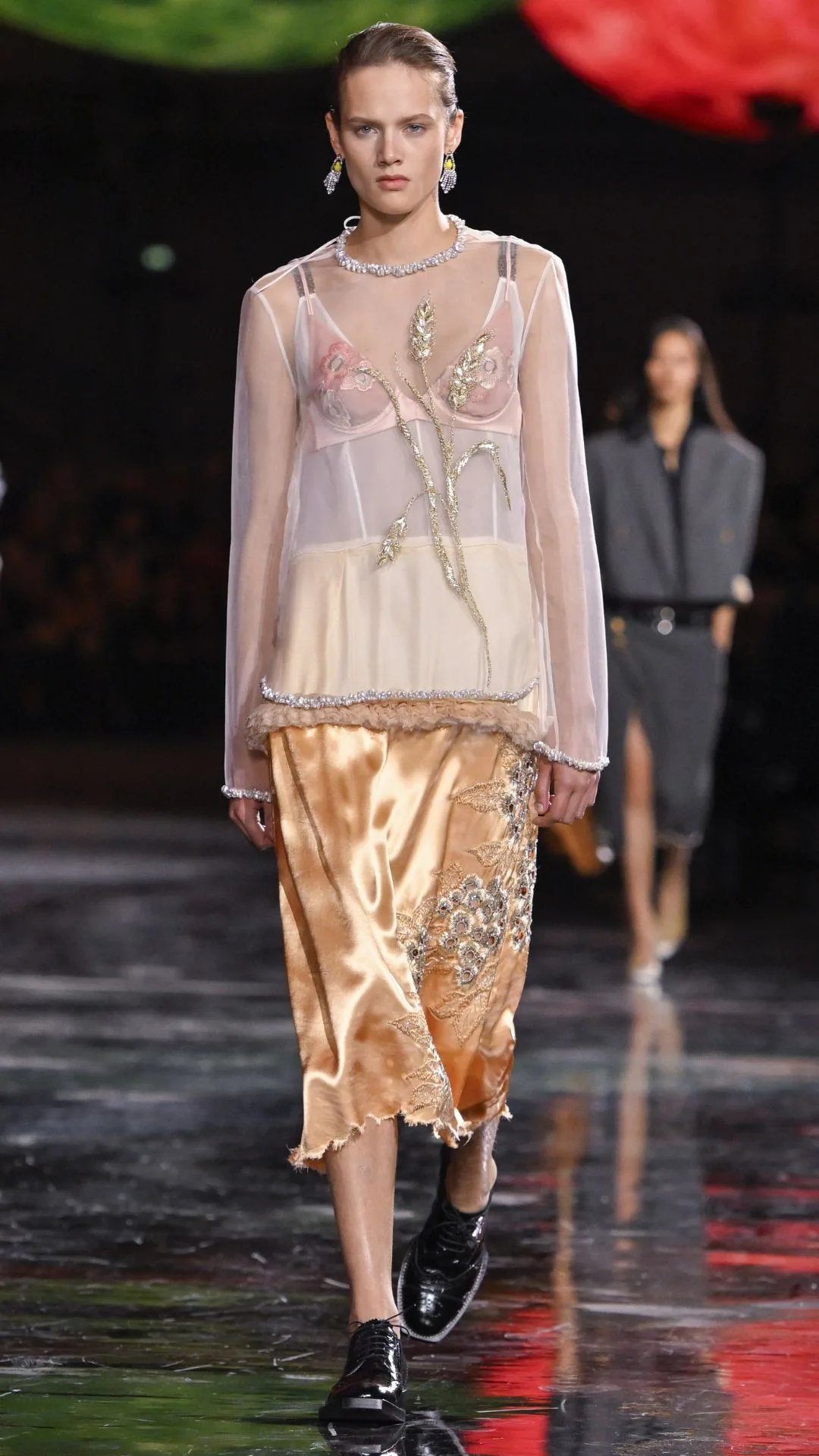
Music and audio enhanced the narrative. Paula Cole’s “I Don’t Want to Wait” set a contemplative, almost rebellious tone, while a monologue on love and heartbreak threaded through the middle. By the end, “Rhythm is a Dancer” had the room on its feet, a celebratory exclamation reflecting the collection’s balance of quiet reflection and joyous spectacle.
Front-row stars mirrored the show’s energy in both style and presence. Margot Robbie, Mikaela Coel, Pedro Pascal, Sofia Coppola, Gracie Abrams, and Nicole Kidman—whose relationship with Chanel dates back to her 2004 N°5 campaign—reflected the collection’s duality: glamorous yet approachable, powerful yet relaxed.
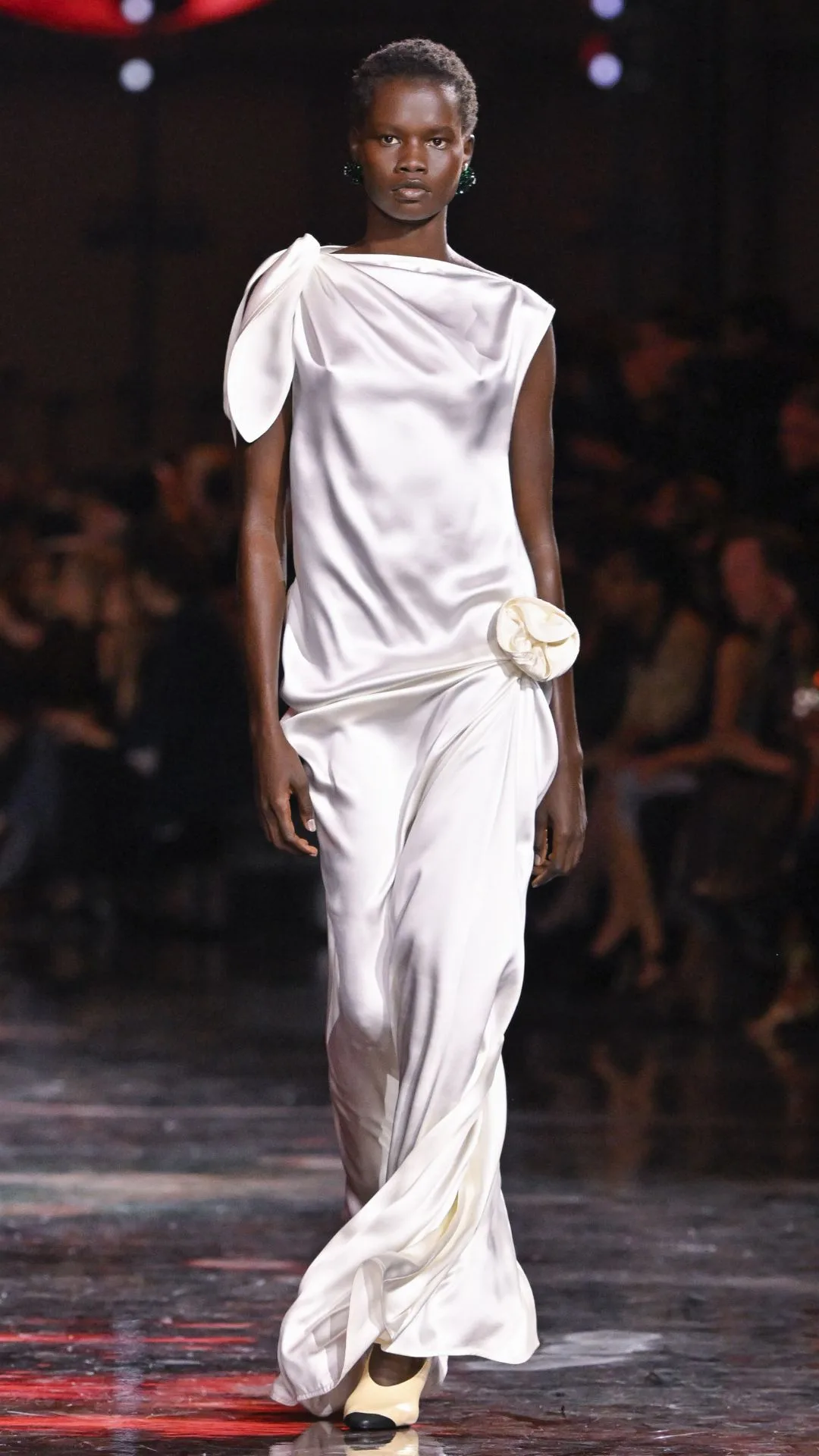
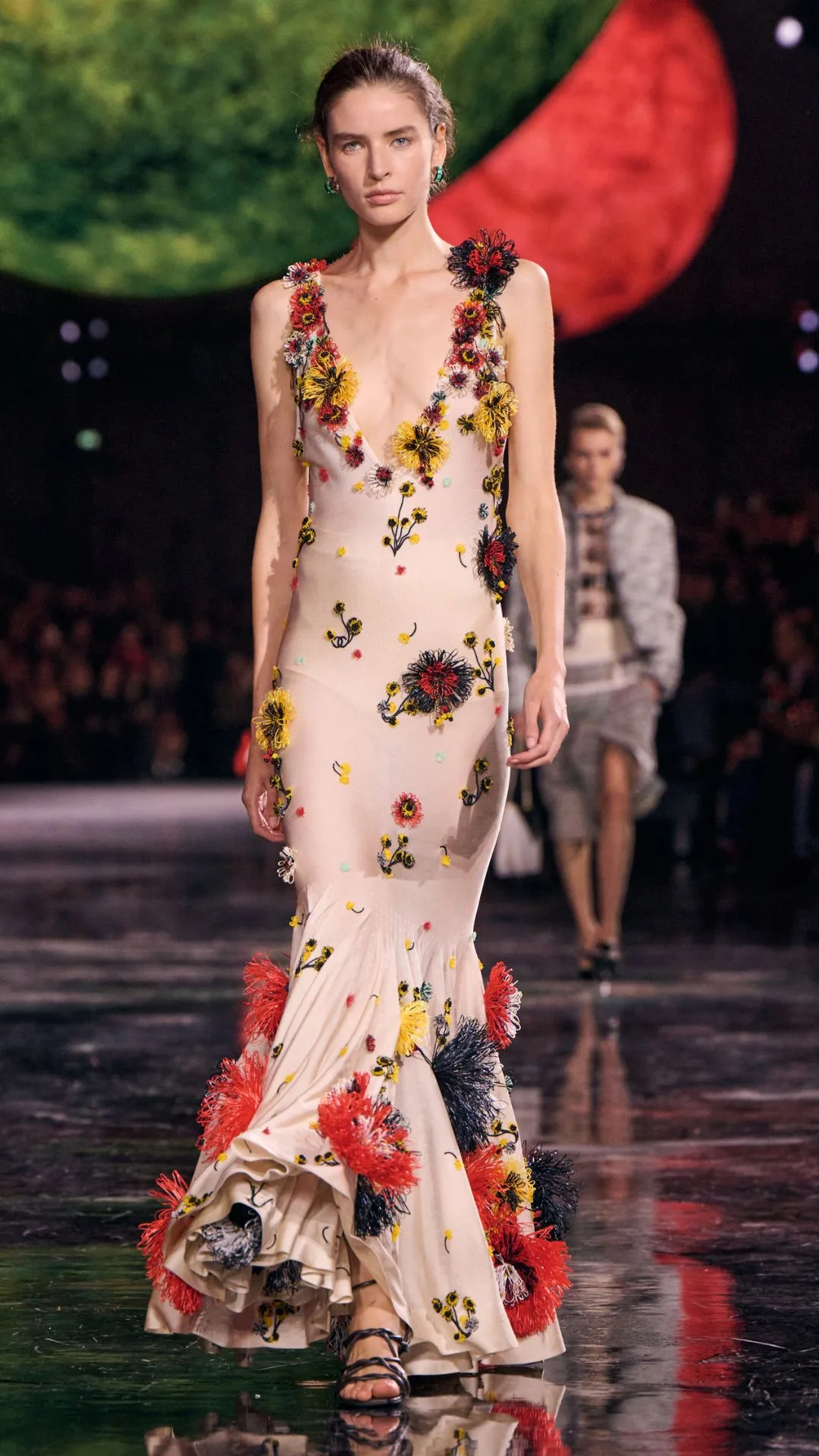
In the hands of Blazy, Chanel felt alive and unrestrained, a study in paradox where every element—from frayed tweeds to feathered maxis, oversized shirts to silk gowns—was both familiar and unexpected. By the final bow, it was clear: this was a collection about freedom, scale, and motion.
As the last echoes of applause faded, the night outside seemed to stretch a little wider, quieter, and more expansive at once. It was a reminder that calm can exist alongside energy, and that beauty—like Paris at night—lives in the spaces between rules, expectations, and imagination.
